| Founder: | ||||
| CHIEN Weizang | ||||
| Honorary Editor-in-Chief: | ||||
| ZHONG Wanxie | ||||
| Editor-in-Chief: | ||||
| LU Tianjian | ||||
| Vice Editor-in Chief: | ||||
| DENG Zichen | JIN Dongping | WANG Jizeng | LIU Zhanfang | WU Chuijie |
| SONG Qiankun | ||||
| Honorary Editorial Board Members:(List by alphabetical order) | ||||
| CHENG Gengdong | CUI Junzhi | HU Wenrui | LAI Yuanming | LI Jibin |
| LIN Jiahao | LIU Renhuai | PENG Xianghe | QIAN Qihu | SHEN Changyu |
| WANG Fuming | XIE Heping | YANG Yongbin | YAO Zhenhan | ZHANG Hanxin |
| ZHANG hongqing | ZHENG Xiaojing | ZHENG Yingren | ZHONG Wanxie | ZHOU Youhe |
| ZHUANG Zhuo | ||||
| Editorial Board Members:(List by alphabetical order) | ||||
| CAI Guoping | CAO Jinde | ZENG Zhong | CHEN Liming | CHEN Liqun |
| CHEN Wei | CHEN Weiqiu | CHEN Xi | CHEN Xiaowei | DENG Ke |
| DENG Zichen | FENG Xiqiao | FENG Zhiqiang | GAO Qiang | GOU Xiaofan |
| GUO Liejin | HE Guowei | HU Shaowei | HUANG Nanjing | HUANG Zhengming |
| JIN Dongping | KANG Guozheng | LI Rui | LI Weiguo | LI Ye |
| LIAO Shijun | LIN Jianzhong | LIN Min | LIU Huanwen | LIU Shaobao |
| LIU Yinghua | LIU Zhanfang | LIU Zhanli | LU Tianjian | MA Li |
| NI Yong | PENG Xiongqi | QIN Shunquan | REN Weixin | SONG Qiankun |
| SU Chen | SUN Dejun | SUN Gang | SUN Zuoyu | TANG Guangwu |
| TANG Sanyi | WANG Yuesheng | WANG Biao | WANG Jizheng | WANG Lipo |
| WANG Moran | WANG Zhenqing | WU Chuijie | XIAO Rucheng | XIAO Shifu |
| XIE Gongnan | XIONG Yongliang | YAN Bo | YANG Shengfa | YANG Xinmin |
| YI Zhijian | ZHANG Aman | ZHANG Liangqi | ZHANG Weinian | ZHANG Weiwei |
| ZHANG Weihong | ZHANG Yahui | ZHANG Qing | ZHAO Jingjun | ZHAO Yapu |
| ZHAO Yan | ZHENG Hong | ZHONG Zheng | ZHOU Huanlin | |
Introduction to Editor-in-Chief
LU Tianjian(卢天健)

Professor T. J. Lu received BS and MS in Applied Mechanics from Xi’an Jiaotong University in 1984 and 1987, PhD in Mechanical Engineering from University of Hong Kong in 1990, and PhD in Engineering Sciences from Harvard University in 1995. Before taking up his current post at Xi’an Jiaotong University, he was Lecturer, Reader and Professor of Materials Engineering at Cambridge University Engineering Department from 1996 to 2006. During this period, he was also Fellow and Director of Studies of Queens’ College. At present, Professor Lu is the founding director of Nanjing Center for Multifunctional Lightweight Materials and Structures (http:/mlms.nuaa.edu.cn/) as well as the founding director of Biomedical Engineering and Biomechanics Center at Xi’an Jiaotong University (http://bebc.xjtu.edu.cn/).
Professor Lu uses theoretical, experimental, and numerical approaches to investigate various research frontiers in engineering sciences, addressing challenges in mechanics of materials, noise and vibration, heat transfer, and biomechanics. Professor Lu has published more than 20 books and book chapters, more than 400 peer-reviewed international journal papers (including 5 ESI high cited papers), and is the recipient of more than 30 patents, with total excitations exceeding 16,500 (Google h index = 61). Between 2005-2015, Professor Lu was the Chief Scientist for the National Basic Research Program (973 Project) of China. He is the recipient of many prestigious awards, including the National Natural Science Award of China and the Young Chinese Scientist Award.
Professor Lu is the Editor-in-Chief of Acta Mechanica Sinica (AMS), the Founding Editor of International Journal of Applied Mechanics, and serves as the Associate Editor or member of the Editorial Board for more than 10 professional journals. From 2010 to 2014, he served as the Vice President of the Chinese Society of Theoretical and Applied Mechanics (CSTAM). At present, representing China, he holds important positions in the International Union of Theoretical and Applied Mechanics (IUTAM): Member of the General Assembly, Member of the Congress Committee (CC), Member of the Congress Committee Nominations Subcommittee, Member of the Symposium Panel (SP), and Member of The Rodney Hill Prize in Solid Mechanics Selection Committee.Professor Lu supervised more than 80 MSc and PhD students and more than 20 postdoctoral fellows.
Research Interests:
1.Mechanics of materials; 2.Multifunctional porous materials and structures: design, fabrication and characterization; 3.Active materials, soft matter; 4.Fracture, creep and fatigue; 5.Heat transfer and thermal management; 6.Vibroacoustics and noise control; 7.Biomechanics and bioengineering.
Introduction to Some of the Editorial Board Members
CAO Jinde(曹进德)

An applied mathematician, Professor and doctoral advisor at the Southeast University. He was born in He County, Anhui Province in Nov. 1963. He received the B.S. degree from Anhui Normal University, Wuhu, China, and the Ph.D. degree from Sichuan University, Chengdu, China, both in Mathematics/Applied Mathematics, in 1986 and 1998, respectively. He has been named as Highly Cited Researcher in Mathematics, Computer Science, and Engineering by Thomson Reuters/Clarivate Analytics. He is the top-one author of 20 most-cited authors on the topic of artificial neural networks during 1997-2007 with two papers listed in the 20 most-cited papers.
His works are widely recognized, and are written into the annual report of the National Natural Science Foundation of China as one of 15 excellent funded projects, and has more than 26473 citations with H-index of 86 according to ISI-Web of Science (36101 citations with H-index of 101 according to Google Scholar). He has received, among others, Thomson Reuters Highly Cited Researchers Award, Thomson Reuters Research Fronts Award, National Innovation Award of China, first class Science and Technology Award by Jiangsu Province of China, and second class Natural Science Award by Ministry of Education of China. Professor Cao is a Member of the Academy of Europe, Foreign Fellow of Pakistan Academy of Sciences, and a Fellow of the IEEE, awarded in January 2016, for contributions to the analysis of neural networks.
CHENG Gengdong(程耿东)

Scientist in mechanics. September 22, 1941 born in Suzhou, Jiangsu. 1964 graduated from the Department of Mathematics & Mechanics, Peking University; 1980 PhD in solid mechanics, Technical University of Denmark. Ex-president of Dalian University of Technology. Engaged in engineering mechanics, computational mechanics and structural optimization. 1995 was elected academician of the Chinese Academy of Sciences (CAS).
1970s participated in the group theory-based method for the structural analysis of water towers, and dynamic analysis of turbine foundations. This work is considered a pioneer of modern layout optimization. Proposed and implemented the semi-analytical method for structural response sensitivity analysis, and studied the methods for error analysis and accuracy improvement together with the Danish researchers. Pointed out the nature of singular optimal solution to structural topological optimization, and gave the correct shape of feasible region. Recent research interest fell on mesh generation and structural optimization under disastrous loads based on reliability theory.
CUI Junzhi(崔俊芝)

Born on June 15,1938 in Xinxiang, Henan, China. Prof. With Academy of Mathematics and System Sciences, Chinese Academy of Sciences, Member of Chinese Academy of Engineering. In 1960s he studied the finite element methods under the guide of Prof.Kong Feng. In spring of 1964, he independently developed the first FEM program for plane elastic problems in China, and successfully solved the stress analysis problems of Liujiaxia Dam and others. In 1972 he began to study the analysis method for elastic contact problems with initial gaps and friction and its application. In 1973 he first discovered that the stress states inside contact bodies depend on the history of the imposed loads, and developed a set of successive linearization methods in terms of the incremental theory and variational inequality, and then compiled the program, and effectively solved the difficult problems raised in Gongzhui Dam with long vertical cracks and its reinforcement.
Since 1980 he had been in charge of a series of National Sci-Tech Key Projects of '6.5', '7.5', '8.5', '9.5' ED Plans, and the key projects of CAS, and 6 projects funded by NNSFC, and completed with his colleagues several large-scale software systems, such as FEPS, BDP, SEFEM and so on. He set up a suit of software engineering methods to develop the application software for science and technology, such as the adaptive organization method of algorithms, the configuration model of software systems and so on. In recent years he proposed a kind of high-order and multi-scale computational method for predicting the physics and mechanics performance of composite materials with periodic configuration and random distribution, and solved some key material/structural computational problems. He has published more than 100 papers and reports, 3 books, and completed more than 30 technical reports to the government or companies. He has been awarded high-class prizes for 6 times.
GUO Liejin(郭烈锦)

A scientist of engineering thermophysics and energy utilization, Professor of Xi'an Jiaotong University. He was born in Suichuan County, Jiangxi Province in October 1963. In 1983, he graduated from the major of thermal engineering of Xi'an Jiaotong University and received his doctorate in engineering in 1989. In 2017, he was elected as the academician of the Chinese Academy of Sciences. The current director of the State Key Laboratory of Multiphase Flow in Power Engineering.
He is mainly engaged in the research of energy & power multiphase flow and hydrogen energy science and technology. Aiming at the scientific frontier and national needs in fields of fossil energy, clean and efficient conversion of renewable energy with high efficiency and low cost, he built the theory on complex multiphase flow, energy transmission & conversion, multiphase flow test & control and flow security; he created a new theory and new method for hydrogen production out of supercritical water vapor-steamed coal and solar light-catalyzed multiphase continuous flow, which were successfully applied in many fields of aerospace, marine oil and thermal power, yielding achievements of system innovation. He has won the 2nd prize of the National Natural Science Award, the 2nd prize of the National Technical Invention Award and the National Innovation Award.
HE Guowei(何国威)
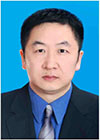
A scientist of fluid mechanics. Research Fellow, Institute of Mechanics, Chinese Academy of Sciences. He was born in Shanghai in March 1963. He graduated from Northwestern Polytechnical University in 1983 and received a doctorate from Northwestern Polytechnical University in 1991. He is mainly engaged in the study of turbulence and computational fluid mechanics. In terms of statistical theory for turbulence, he proposed a spatio-temporal EA model, which reveals the coupling mechanism of vortex propagation and distortion, predicts the self- similar attenuation property of spatio-temporal correlation verified by experiments.
On this basis, he established the space-time model for the Lagrangian velocity and compressible turbulent flow. In computational fluid dynamics, he gave the space-time correlation method for large eddy simulation, which overcomes the fundamental flaws of the energy balance method in prediction of space-time energy spectrum and is suitable for numerical prediction of turbulent noise spectrum. He developed the smoothing function method to restrain the non-physical oscillation in the calculation of the flow pressure on the moving boundary.
HU Wenrui(胡文瑞)
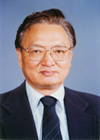
Physicist in fluid. Hubei Wuchang origin, April 4, 1936 born in Shanghai. 1958 graduated from the Department of Mathematics & Mechanics, Peking University. Researcher with Institute of Mechanics, Chinese Academy of Sciences (CAS). 1995 was elected academician of CAS.
Early devoted to the study of MHD. 1970s shifted to solar-terrestrial physics research, put forward some new concepts about the magnetic field of solar active regions, fluctuation model of solar flares, 3-dimensional structure of the heliospheric magnetic field and solar wind acceleration mechanisms, etc. In astrophysics, studied the density wave theory and put forward the galactic shock wave theory for the galaxy spiral structures, determined the fine structure of dual-source radio jets with the perturbation method. In recent years engaged in microgravity fluid physics research, made systematic academic contribution to thermal capillary convection in the floating zone, presided over a number of domestic major research programs on microgravity.
LAI Yuanming(赖远明)
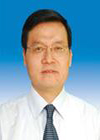
Expert in cold regions engineering and civil engineering. Researcher with Cold and Arid Regions Environmental and Engineering Research Institute, Chinese Academy of Sciences (CAS). Born in August 1962 in Jiangxi Longnan. 1983 graduated from Jiangxi University of Science and Technology, 1986 received a master's degree in Lanzhou Jiaotong University, 1999 received PhD in Chinese Academy of Sciences (CAS). 2011 was elected academician of CAS.
Long engaged in research of cold regions engineering theory and numerical analysis. Proposed the permafrost strength criterion, established the permafrost multi-yield surface, non-associated generalized elasto-plastic constitutive model and permafrost creep damage statistical constitutive model. Studied the cooling effect and mechanism of gravel layers, built the fluid-solid coupling mathematical model for heat transfer and thermal characteristics analysis of gravel embankment, developed a new structure form of "active cooling embankment", proposed freeze damage forecasting methods and integrated control technology in cold regions engineering.
LIU Renhuai(刘人怀)
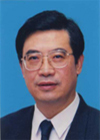
Expert in plate and shell structures analysis and application. July 1940 born in Chengdu. 1963 graduated from Lanzhou University. Ex-president, professor with Jinan University. 1999 was elected academician of Chinese Academy of Engineering (CAE).
One of the pioneers in plates and shells theory and application research. Co-founded the modified iteration method for solving nonlinear differential equations, studied the nonlinear bending, stability and vibration problems of 6 types of plates and shells. Raised for the first time the design formula for the key elastic elements in precise instruments. Systematically proposed the design formulae for sandwich and composite aircraft structure components. Presented the bending theory and design formulae for thick plates and shells.
QIAN Qihu(钱七虎)
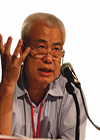
Expert in protection works and underground engineering. October 26, 1937 born in Kunshan, Jiangsu. 1960 graduated from the Harbin Military Engineering Institute, 1965 received vice PhD in the former Soviet Union's Moscow Kuibyshev Military Engineering Academy. Professor with PLA University of Science and Technology. 1994 was elected academician of Chinese Academy of Engineering (CAE).
Long committed to research of protection works to deal with a series of major problems involving the dynamic soil-structure interaction under shock wave, probability design theory for protection works and the effects of geological faults on explosion stress intensity. Solved the calculation and design of multiple large-scale engineerings of opening protection, long-span protective portals, canvas fortifications and shallow soil-buried structures.
QIN Shunquan(秦顺全)

Expert in bridge & structure engineering. Born in July, 1963 in Mianzhu, Sichuan province, and got his master's degree of engineering from the Southwest Jiaotong University in 1987. The chief engineer of the China Major Bridge Engineering Co., Ltd, an adjunct professor and doctoral supervisor with the Southwest Jiaotong University, and the vice board chairman of the Branch of Bridge & Structure Engineering, China Civil Engineering Society. He has been long engaged in the design and construction of major bridges and made important contributions to the development of bridge engineering of China. He has been in charge of the design and construction of multiple world-leading super bridges, such as the Wuhan Tianxingzhou Highway & Railway Changjiang River Bridge, the Wuhu Changjiang River Bridge, the Hangzhou Bay Bridge, the Haikou Century Bridge and the Qing-Zang Railway Lasha River Bridge, etc.
He completed over 30 research projects of nation level or ministry level and founded the technical system of stress-free status control theory and method for the segmental construction of large-span bridges, which was successfully applied to over 30 major bridges. He renovated the industrialization and standardization of bridge construction and advanced the holistic precasting and erecting techniques for ocean bridges and passenger-dedicated railway bridges. He has won the National Prize for Progress in Science and Technology for 5 times, including 1 grand prize and 1 first prize, received 7 invention patents and published 3 monographs and tens of papers. He was elected as the academician of the Chinese Academy of Engineering in 2009.
SHEN Changyu(申长雨)

Professor Shen is a well-known scientist in the field of polymer materials processing and mould optimization design. He graduated from Dalian University of Technology and received his Ph.D. in 1990. He was elected member of the Chinese Academy of Sciences (CAS) in 2009 and served as the president of Zhengzhou University during 2003-2012.
Professor Shen specializes in the theories, technologies and numerical simulation methods of polymer materials processing and molding, plastic mould optimization design and manufacturing. He developed the mathematical models and computational methods of filling/packing, cooling and warpage processing etc. of injection molding. He solved the coupling problems in the injection molding flow/packing processing, singularity issues and conputatioal efficiency of mold thermal field and improved the warpage prediction accuracy. He made a great contribution to the progress of injection molding CAE technology. He made the helmet viewing windows of spacesuits of Shenzhou 7 and Shenzhou 9 spacecrafts. His recent research fields include but not limited in polymer materials processing numerical simulation, cross-scale modeling and calculating of polymer materials processing, polymer materials processing technology and mould optimization design, special polymer products for national strategy, etc.
WANG Fuming(王复明)

WANG Fu-ming (1957.3-), born in shenqiu, Henan. He has long been engaged in theory and technology for the security and maintenance of infrastructure facilities, and made systematic innovations in aspects of water leakage control and hidden defects treatment in foundation engineering.
He proposed new ways of flexible impervious body for soil dams, invented the polymer-grouting technology and equipment against water leakage and piping in underground engineering and dams based on the newly built non-aqueous reactive polymer diffusion theory. He established the inversion theory for the dielectric properties and mechanical properties of layered structures, proposed the fine polymer grouting method based on the non-destructive detection and developed the trenchless remediation technology for highways, high-speed-rail ballastless tracks and underground pipes. His research results have been widely used for anti-seepage in foundation engineering repair and emergency rescue, solving lots of major engineering challenges. He won the 2nd prize of national technology invention, the 2nd and 3rd prizes of national scientific and technological progress, and won the international trenchless research award and the award for outstanding contribution to science and technology in Henan province. In 2015 he was elected academician of the Chinese Academy of Engineering.
Yang Yongbin(杨永斌)

Dr. Yang is currently Honorary Dean of College of Civil Engineering, Chongqing University (CQU), China, Professor Emeritus at the Department of Civil Engineering, National Taiwan University (NTU), Chairman of Accreditation Council of Institute of Engineering Education Taiwan (IEET), and Vice President of the following two organizations: Asian-Pacific Association for Computational Mechanics (APACM) and East Asia-Pacific Conference on Structural Engineering and Construction (EASEC).
He is a member of Chinese Academy of Engineering, foreign member of Austrian Academy of Sciences, and fellow of American Society of Civil Engineers (ASCE) and International Association of Computational Mechanics (IACM). Previously, he was President of YunTech, i.e., National Yunlin University of Science and Technology (2009-13), and Dean of College of Engineering, NTU (1999-2005). He received his Ph.D. degree from Cornell University in 1984. His areas of expertise include structural nonlinear analysis, vehicle-bridge interaction dynamics, and train-induced wave propagation. On each area he has published a monograph. As of now, he has published over 180 referred journal papers and over 250 conference papers. He is an Editor-in-Chief of International Journal of Structural Stability and Dynamics, and a member of the Editorial or Advisory Board of journals including Engineering Structures, Journal of Sound and Vibration, Structural Engineering and Mechanics, Advances in Structural Engineering, etc.
XIE Heping(谢和平)

Expert in mine rock mechanics. Jan. 17, 1956 born in Shuangfeng, Hunan. 1987 received PhD from China University of Mining and Technology. President and professor with Sichuan University. 2001 was elected academician of Chinese Academy of Engineering (CAE).
Long committed to mine rock mechanics and engineering studies. In the early 1980s first established the fractured rock macroscopic damage mechanics model to study the mechanisms and processes of mine rock disasters and accidents, opened up the new research fields of fractured rock damage mechanics, successfully predicted the large damage deformation and creep failure process of wall rock affected by mining, and advanced the application to those important areas of large deformation prediction of deep tunnels, creep analysis and support design. Since 1985, introduced the fractal method to study the fractured rock's discontinuous deformation, strength and failure to form a new research direction combined with damage mechanics and widely applied in rock blasting, mining subsidence, top coal fragmentation control, etc.
ZHANG Hanxin(张涵信)

Scientist in aerodynamics. January 1, 1936 Born in Pei County, Jiangsu. 1958 graduated from the Water Conservancy Engineering Department of Tsinghua University. Researcher of China Aerodynamics Research and Development Center, director of Chinese Aerodynamics Research Society. 1991 was elected academician of the Chinese Academy of Sciences (CAS).
With perturbation method, successfully solved the difficult problem of blunt body hypersonic flow and its entropy layer issues, developed the entropy layer theory for slender blunt body flow, put forward the formation conditions for the second shock wave in hypersonic flow. First proposed the mathematical conditions determining the 3-dimensional flow separation, revealed the vortex bifurcation evolution rule along its axial direction, topological structure rule of separation flow and judgement criteria for aircrafts' dynamic stability and bifurcation evolution. Discovered the relation between the 3rd-order dispersion term and the difference solution's fluctuation at shock wave, advanced the physical concept of establishing a high-resolution difference scheme. Built the NND difference algorithm without fluctuation and free parameters, and the high-precision algorithm. Established the similarity criteria between cloud particle erosion and real gas experimental simulation. Developed sets of numerical software for calculation of spacecrafts.
ZHANG Weihong(张卫红)

ZHANG Weihong, who was Born in August 1964 in Weifang, Shandong. He Graduated from Northwestern Polytechnical University in 1984, obtained a doctoral degree from the University of Liege in Belgium in 1991, and was elected as an academician of the CAS Member in 2021. ZHANG Weihong is an expert in the field of mechanical design and manufacturing, who mainly engages in research on high-performance design theory and manufacturing technology for aerospace structures.
ZHENG Xiaojing(郑晓静)
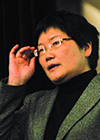
Scientist in mechanics. Zhejiang Yueqing origin, May 1958 born in Wuhan, Hubei. President and professor with Xidian University. 1982 graduated in the Department of Mechanics, Huazhong University of Science and Technology and there received a master's degree in 1984, PhD in 1987 from Lanzhou University. 2009 was elected academician of the Chinese Academy of Sciences (CAS).
Long engaged in research of elasticity, electromagnetic material structural mechanics and sandstorm physical mechanics. Solved the difficult problems of convergence proof of exact solution and approximate analytical solution to large-deflection thin plates, perfected the solving theory for geometrical non-linearity of plates and shells. Systematically established the basic theoretic models and effective methods for the quantitative analysis of multi-field coupling non-linear meachanical behaviors related to ferromagnetic, super-magnetostrictive and superconducting materials within electromagnetic fields, eliminated the inconsistency between the traditional theoretical prediction and typical experiments. Finished lots of experiments and field tests of sandstorm environment mechanics, studied the effects of sand electricity on sandstorm movement and proposed the theory and forecast method for the formation and evolution process of sand paterns and dunes. Put forward the theoretical design formula for engineering stabilization of sands ( grass squares ).
ZHENG Yingren(郑颖人)
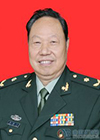
Geotechnical and underground engineering expert. Nov. 5, 1933 born in Zhenhai County, Zhejiang. Professor with the Logistical Engineering University of PLA. 1956 graduated from the Beijing Petroleum Institute. 2001 was elected academician of the Chinese Academy of Engineering (CAE).
1978 put forward the calculation formulae for elastoplastic & viscoelastroplastic displacements and wall rock pressure of underground engineering, and perfected the wall rock pressure theory for underground engineering. Developed the strain space plasticity theory and the multi-yield surface theory, and made significant progress in the establishment of generalized plasticity theory. Essentially advanced the methods of the geotechnical engineering boundary element, strain space elasto-plastic finite element, elasto-plastic semi-analytical element and back analysis.
ZHONG Wanxie(钟万勰)

Scientist in engineering mechanics and computational mechanics. Zhejiang Deqing origin, February 24, 1934 born in Shanghai. 1956 graduate of Department of Bridge & Tunnel Engineering, Tongji University. Professor with Department of Engineering Mechanics, Dalian University of Technology. 1993 was elected academician of the Chinese Academy of Sciences (CAS).
1960s found the instable structure forms of submarine cone-column combined shells. 1970s with the research group developed a large number of group theory-based engineering software applications, and presided over the development of 3-dimensional finite element system JIGFEX/DDJ. 1980s proposed the sequential quadratic programming-based structural optimization algorithms and DDDU program system, gave the new upper and lower bound theorem for structural limit analysis, and then put forward the parametric variational principle and corresponding parametric quadratic programming algorithms for elasto-plastic deformation and contact problems. One of the founders of Chinese computational mechanics. Since 1989, discovered the analog between structural mechanics and optimal control, whereby also proposed a new system for solving elasticity and methodology for precise integration.
ZHOU Youhe(周又和)

ZHOU Youhe, who was born in May 1957 in Hanchuan, Hubei Province. He is a doctor, professor and the president of the Institute of Superconducting Mechanics of Lanzhou University. ZHOU Youhe is an academician of the CAS Member, a winner of the National Outstanding Youth Fund project, a Changjiang Scholars distinguished professor of the Ministry of Education, a leader of the national innovation research group, and a winner of the National Outstanding Teaching Award.
Education:
Sep 1987-Jun 1990 Ph.D. in Solid Mechanics, Lanzhou University, Lanzhou, China;
Jan 1982-Jun 1984 M.E. in Solid Mechanics, Huazhong University of Science and Technology, Wuhan, China;
Mar 1978-Jan 1982 B.S. in Mechanics, Huazhong University of Science and Technology, Wuhan, China
Research Areas:
Nonlinear solid mechanics; Electromagnetic solid mechanics; Environment mechanics; Multi-field coupled nonlinear mechanics
Members and Activities:
Oct 2010-Present, Executive director, Chinese Society of Theoretical and Applied Mechanics;
Apr 2010-Present, Associate Editor, Journal of Lanzhou University (natural science), China;
Apr 2011-Present, Member of the editorial board, Chinese Journal Computational Mechanics;
Member of the editorial board, Mechanics in Engineering, China
Awards:
Jan 2014-Dec 2018 Design and Fabrication of Test Facility of Ultra-Low-Temperature/Electric Multi-field for Measurement of Superconducting-Material Mechanical Properties, The Found of Natural Science Foundation of China (11327802); Jan 2013-Dec 2017 Mechanical analysis method for large superconducting magnets in fusion reactor, The Found of Natural Science Foundation of China (2013GB110002);
Jan 2012-Dec 2014Nonlinear mechanics of interaction between complex environment and medium, The Found of Natural Science Foundation of China (11121202);
Jan 2011-Dec2014 Theoretical and experimental research on mechanics, The Found of Natural Science Foundation of China (11032006)







